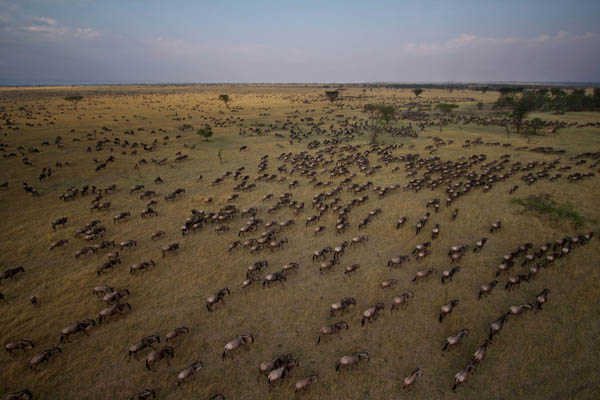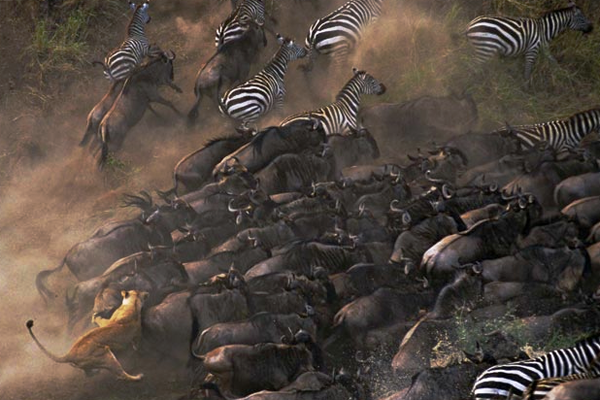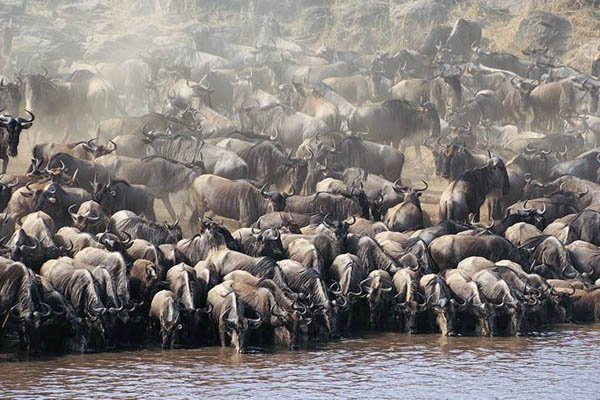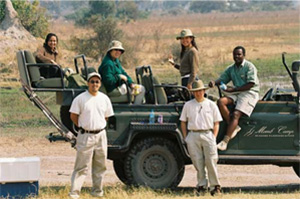The annual phenomenon known as 'The Greatest Show on Earth' is the migration of over two million wildebeest, zebra and other grazing herbivores across the Serengeti–Mara ecosystem and is indeed one of the greatest spectacles in the natural world.

The timing and movement of the herds are determined by rainfall patterns and the availability of fresh nutrient-rich grass. Wildebeest typically spend the wet months on the short grass plains in the southern Serengeti and the dry season in the northern Serengeti and the Maasai Mara.
The migration is rarely ever the same in terms of timing and direction, as local weather and other conditions influence grass growth but the herds' general movements are fairly predictable.

WHEN AND WHERE IS THE MIGRATION ON A TYPICAL RAINFALL PATTERN YEAR
January to April:Female wildebeest give birth to more than half a million calves simultaneously over a period of three or four weeks between January and March when optimum grazing is available on the Serengeti's short grass plains.
May to June:The herds leave the southern plains to a smaller area in central Serengeti which coincides with the rutting or breeding season.
July:The wildebeest head north-west to the Serengeti's Western Corridor and the Grumeti River. This is the herd's first real obstacle as massive, hungry crocodiles wait at the river's edge.

August to October:The herds move further north and cross the Kenyan border into the Maasai Mara and brave the powerful Mara river and its resident crocodiles. The wildebeest cross back and forth between the productive grasslands of the Maasai Mara and the northern Serengeti.
November to December:As the storm clouds gather in the southern Serengeti, the herds return to their lush and fertile breeding grounds and another cycle begins.



